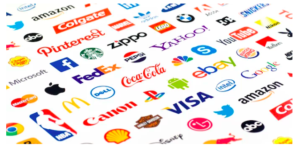Competing in the Voice Market: Brands Struggle with Strategy

Image Source: Smart Company
Whether it’s a funky shaped speaker in the living room, a microphone icon on a smartphone screen or a tap of the automobile dashboard, consumers are gaining comfort using voice technology to get what they want – brands and businesses need to be ready.
In Q3 2018, the number of smart speakers across the world grew nearly 200%; Up to 43% of device owners use them to shop or assist with purchases. Currently most voice activity sways towards researching products rather than buying them, due to lingering concerns from shoppers related to privacy/security issues and the tendency to make mistakes such as duplicate or accidental orders. But, by the end of 2019, eMarketer predicts 32.5% of US smart speaker users will translate to 22.7 million voice buyers. By 2020, OC&C Strategy Consultants predict that voice commerce will hit $40 billion, that’s a number commerce providers simply can’t ignore.
In a recent interview with StreetFight, MomentFeed Senior Vice President Derek Browers commented, “What we’re witnessing with the rise of voice as an interface is analogous to the rise of the smartphone. The largest difference is that voice is being adopted much faster, with 40% of Americans already owning a smart speaker.” That’s on top of the fact that smartphones themselves will drive the adoption of voice, coupled with growth in connected smart speakers, connected home devices and smart cars – all compounding the market change effected by this new interface.
Brands Getting it Right, Now
While traditional creative ad campaigns focused on catchy slogans, memorable jingles and SEO strategy to penetrate the minds of consumers, brands taking advantage of voice technology are focusing on ways to command their space. By partnering with companies to build specific skills within familiar voice interfaces – like Google and Amazon – they provide engaging services to people who prefer one specific answer over a list of options.
While most companies are still contemplating how to understand and implement voice technology into their gamut of marketing solutions, a few brands have broken the voice barrier to take full advantage by offering “skills” that help consumers in ways other than standard purchasing.
- Tide: Tide has found a way to help you always look your best. The Tide Stain Remover skill will tell you tricks on how to remove up to 200 different types of stains, from ink to coffee, so you can keep your clothes looking sharp even during sloppy mishaps.
- Purina: Ever wonder what dog would be best for you? Purina can help you figure it out. Ask Purina offers smart-speaker users a way to learn more about different dog breeds and answer questions related to behaviors, shedding, and of course, feeding guidelines.
- Patrón: The company launched a voice-driven skill known as its “bot-tender” offering cocktail recipes and information about tequila back in 2016. Since then, Patrón has gained over 36,000 users and sees more than 6,000 sessions per month from people using the voice-activated skill.
Businesses and Brands Strategize for the Future

Image Source: Martech Advisor
To successfully compete in the voice-driven marketplace, companies need to go beyond developing specific skills and delve deeper into understanding how to incorporate homegrown conversational interfaces into existing lines of business, enabling companies to offer richer customer experiences and better products based on customer interactions. This requires partnering with white-label conversational AI platforms that allow any brand or business to add smart, voice-enabled, conversational and search interfaces to any product or service so they can understand a wide variety of questions and return the right answer.
How Can Brands and Businesses Find the Right Voice Solution?
It’s true that Google and Amazon currently have more smart speaker devices in more homes than any other device out there, but it’s a matter of time before they saturate their own potential. For example, British grocery chain Ocado allows Amazon users to build a grocery list using voice commands, which is in direct competition with Amazon’s own grocery services. Brands that want to make their stake in the voice market will need alternative solutions with more forgiving revenue splits, more friendly data sharing practices and the ability to customize a solution.
In addition, businesses are looking for alternative solutions that allow them to own the data generated by their customers, as opposed to Google and Amazon who take the data for themselves to either develop competing products or monetize it on other ways. Companies with firm roots in search and natural language understanding technology, offering a holistic Conversational AI platform that enables businesses to create, customize, and scale engaging experiences while maintaining their brand, and offers them 100% ownership of their data and customers, stand to make a real impact.
In the hospitality industry for example, brands are moving beyond traditional marketing strategies and incorporating voice to connect with consumers. Hoteliers are turning to brands like Angie Hospitality, NTENT, and Intelity to improve guest service, implement cost savings, and expand revenue streams. Companies like Angie and Intelity provide platforms that use customized devices such as a smart speaker/tablet where guests can vocalize their hotel service needs or request visitor information. With roots based in web search and natural language processing, NTENT offers the option to integrate its technology with existing hotel services for fast, specialized customer attention.
Becky Linahon, director of marketing at TetraVX recently gave an interview with StreetFight where she stated, “Marketers know this is what’s coming, but they simply aren’t sure how to prepare. Approaching voice tech will come from a combination of understanding the technology and truly understanding your brand. As organizations develop new applications built specifically for voice assistants, it will be more important than ever to know who your consumers are, what they want to know or do, and where your brand fits into their day-to-day life.”
3 Ways Brands Can Prepare to Venture Towards Voice
- Identify your current weaknesses. Whether a certain area of your business has started to see slower growth, or your competition is advancing at a faster pace than your own, it’s time to define the holes in your system in order to make room for improvement.
- Invest in your own conversational interface or partner with a platform provider. While a leap of faith is often necessary when incorporating new technology into a business plan, it’s not always financially feasible. Assess your fiscal budget and manpower to determine the most effective and efficient way to move forward with voice.
- Isolate areas ripe for personalization. Voice technology provides brands with valuable insight into the wants, needs, and habits of their target audience. By concentrating on areas currently lacking a personal touch, you reinforce the value for customers while solidifying their loyalty to your brand.
The time to act is now. To gain a competitive edge, businesses and brands need to establish themselves as first movers in the voice ecosystem. The future is only a soundbite away.









